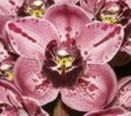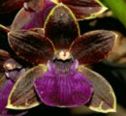


Revised: 10/23/2008
 |
 |
 |
Making Fertilizer Revised: 10/23/2008 |
We make our fertilizer from the basic chemical salts and do not use any of the commercial fertilizers. For those who are interested, our basic fertilizer is made of monobasic ammonium phosphate (this is not the ammonium phosphate available in nurseries which usually has a 16-20-0 NPK formulation, but has a 12-61-0 NPK formulation), potassium nitrate and ammonium sulfate during the winter with about one pint of a trace element mix added. We add ammonium nitrate to this basic mix during the growing season from early April to mid October, or whenever the weather is warm and day temperatures are above 70 degrees. The amount by weight is given below.
| monobasic ammonium phosphate | 5 lbs |
| potassium nitrate | 8 lbs |
| ammonium sulfate | 4 lbs |
| ammonium nitrate (growing season or summer only) | 13 lbs |
The dry chemical salts are dissolved in 32 gallons of water in a 32 gallon trash can as a fertilizer concentrate, and used with a Dosatron 40 injector set at a 1:200 mixing ratio. This makes 6400 gallons of water with 60 ppm phosphorous as P2O5, 61 ppm potassium as elemental, 50 ppm nitrogen as elemental in winter and 134 ppm nitrogen as elemental in summer. The fertilizer is applied with an overhead sprinkler system with a total water supplied of about 0.5 inches equivalent rainfall. This formulation is used for all our plants, in the greenhouse and outdoors. For plants in the greenhouse, the fertilizer is applied through a hose injector with a dilution of 16:1 and about a half gallon of the fertilizer concentrate added to 5 gallons of water.
Periodically, perhaps once a month, we will replace the monoammonium phosphate with 2.5 lbs of iron sulfate and 0.5 lb of zinc sulfate to provide the plants with a dose of iron and zinc. The concentration of iron is 10 ppm and zinc is 2.5 ppm in this solution. The iron and zinc cannot be added with the monoammonium phosphate since it will form an insoluble iron and zinc phosphate precipitate which will settle out of solution.
We also add trace elements to our fertilizer concentrate. The trace elements are mixed in a separate concentrate, and one pint is added to the fertilizer concentrate. The composition of the trace element mix is given below.| Chemical compound | Weight in grams |
| Thiamine hydrochloride (Vitamin B1) | 27.25 g |
| Phosphoric acid 75% (H3PO4) | 965 g |
| Cobalt chloride (CoCl2.6H2O) | 1.14 g |
| Sodium molybdate (Na2MoO4.2H2O)) | 0.23 g |
| Manganese sulfate (MnSo4) | 49.92 g |
| Copper sulfate (CuSO4,5H2O) | 35.75 g |
| Nickel sulfate (NiSO4.6H2O) | 0.81 g |
| Boric Acid (H3BO3) | 20.7 g |
| Magnesium sulfate (MgSO4.7H2O) | 919 g |
Add the phosphoric acid to 4.5 gallons of water and stir thoroughly. Dissolve the dry ingredients in the water and phosphoric acid solution. Add water to make 5 gallons. Use at the rate of 1 to 2 drops to a gallon of final fertilizer solution (2 to 4 oz per 1000 gallons). We use a pint of this concentrate added to the fertilizer concentration described above.
The solution concentration of this concentrate is:
0.15% thiamine hydrochloride (Vitamin B1)
2.9% P2O5 (from phosphoric acid)
0.001% cobalt as elemental (from cobalt chloride)
0.0005% molybdenum as elemental (from sodium molybdate)
0.1% manganese as elemental (from manganese sulfate)
0.05% copper as elemental (from copper sulfate)
0.001% nickel as elemental (from nickel sulfate)
0.02% boron as elemental (from boric acid)
0.5% magnesium as elemental (from magnesium sulfate or Epsom salts)